
SN400TYLA SL400TYLA
Table of Contents
R
Safety Information Warnings.....................................2
Air For Combustion & Ventilation............................4
Installation....................................................................6
Blower Accessory ...................................................10
Operating Heater.....................................................12
Specifications.............................................................14
Troubleshooting........................................................15
Parts Breakdown & Parts List..................................18
Log Placing Instructions........................................22
OWNER
’
S OPERATION AND INSTALLATION MANUAL
LP. & NATURAL GAS
VENT-FREE PEDESTAL STOVE
WARNING: If the information in this
manual is not followed exactly, a fire or
explosion may result causing property
damage, personal injury, or loss of life.
WARNING: This is an unvented gas-fired
heater. It uses air (oxygen) from the room
in which it is installed. Provisions for
adequate combustion and ventilation air must
be provided. Refer to Air For Combus-
tion and Ventilation section on page 4 of this
manual.
WARNING: Improper installation,
adjustment, alteration, service or maintenance
can cause injury or property damage. Refer to
this manual for correct installation and opera-
tional procedures. For assistance or addi-
tional information consult a qualified installer,
service agency, or gas supplier.
Do not store, or use gasoline or other flammable
vapors and liquids in the vicinity of this or any
other appliance.
WHAT TO DO IF YOU SMELL GAS
Do not try to light any appliance.
Do not touch any electrical switch; do not
use any phone in your building.
Immediately call your gas supplier from a
neighbor’s phone. Follow the gas supplier’s
instructions.
If you cannot reach your gas supplier, call
the fire department.
Installation and service must be performed by a
qualified installer, service agency or gas
supplier.
This appliance may be installed in an aftermar-
ket* permanently located, manufactured
(mobile) home, where not prohibited by local
codes.
This appliance is only for use with the type of
gas indicated on the rating plate. This
appliance is not convertible for use with other
gases.
*Aftermarket: Completion for sale, not for purpose of
resale, from the manufacturer.
Installer : please leave these instructions with the
consumer
WATER VAPOR:A BY-PRODUCT OF UNVENTED ROOM
HEATERS
Water vapor is a by-product of gas combustion. An
unvented room heater produces approximately one
(1)ounce(30ml) of water for every 1,000BTU’s(.3KW’s)
of gas input per hour, refer to page 6.
Consumer : please retain these instructions for
future use
CINTINENTAL APPLIANCE INC
5 Musick 4600 Highlands Parkway S.E.
Irvine Suite # D/E
CA 92618 Smyrna, GA 30080
TOLL-FREE NUMBER: 1-877-886-5989

2
IMPORTANT: Read this
owner’s manual carefully and
completely before trying to
assemble, operate, or service
this heater. Improper use of
this heater can cause serious
injury or death from burns,
fire, explosion, electrical
shock, and carbon monoxide
poisoning.
SAFETY INFORMATION WARNINGS
DANGER: Carbon monoxide
poisoning may lead to death!
Carbon Monoxide Poisoning:
Early signs of carbon monoxide
poisoning resemble the flu with
headaches, dizziness, or nausea.
If you have these signs, the heater
may not be working properly. Get
fresh air immediately! Have heater
serviced. Some people are more
affected by carbon monoxide than
others. These include pregnant
women, people with heart or lung
disease or anemia, those under the
influence of alcohol, and those
at high altitudes.
Propane/LP Gas: Propane/LP gas
is odorless. An odor-making agent
is added to Propane/LP gas. The
odor helps you detect a
Propane/LP gas leak. However, the
odor added to Propane/LP gas can
fade. Propane/LP gas may be
present even though no odor
exists.
Natural Gas: Natural gas is odorless.
An odor-making agent is added to
natural gas. The odor helps you
detect a natural gas leak. However,
the odor added to natural gas can
fade. Natural gas may be present
even though no odor exists.
Make sure you read and under-
stand all warnings. Keep this manual
for reference. It is your guide to safe
and proper operation of this heater.
WARNING: Any change to
this fireplace or its controls can
be dangerous.
WARNING: Do not allow fans to
blow directly into the heater. Avoid any
drafts that alter burner flame patterns.
Ceiling fans can create drafts that
alter burner flame patterns. Altered
burner patterns can cause sooting.
Do not place clothing or other
flammable material on or near the
appliance. Never place any objects
in the fireplace.
Due to high temperatures, the
appliance should be located out of
traffic and away from furniture
and draperies.
WARNING: Do not use a blower
insert, heat exchanger insert, or other
accessory not approved for use with
this heater.
Heater becomes very hot when
running fireplace. Keep children and
adults away from hot surfaces to
avoid burns or clothing ignition.
Fireplace will remain hot for a time
after shutdown. Allow surfaces to
cool before touching.
Carefully supervise young children
when they are in the room with the
fireplace.
You must operate this heater with
the heater screen in place. Make
sure heater screen is in place
before running heater.
Keep the appliance area clear and
free from combustible materials,
gasoline, and other flammable
vapors and liquids.
1. This appliance is only for use
with the type of gas indicated
on the rating plate. This
appliance is not convertible for
use with other gases.
2. Do not place propane/LP
supply tank(s) inside any
structure. Locate propane/LP
supply tank(s) outdoors.
3. If you smell gas
Shut off gas supply.
Do not try to light any appliance.
Do not touch any electrical switch;
do not use any phone in your
building.
Immediately call your gas supplier
from a neighbor’s phone. Follow
the gas supplier’s instructions.
If you cannot reach your gas
supplier, call the fire department.
4. This heater shall not be installed
in a bedroom or bathroom.
5. Do not use this heater as a
wood-burning heater. Use only
the logs provided with the heater.
6. Do not add extra logs or ornaments
such as pine cones, vermiculite, or
rock wool.Using these added items
can cause sooting. Do not add lava
rock around base. Rock and debris
could fall into the control area of
heater.
7
. You must operate this heater with
the heater screen in place. Make
sure heater screen is in place
before running heater. After
servicing, always replace screen
before operating heater.
8. This heater is designed to be
smokeless. If logs ever appear to
smoke, turn off heater and call a
qualified service person.
Note: During initial operation,
slight smoking could occur due to
log curing and heater burning
manufacturing residues.
9. To prevent the creation of soot,
follow the instructions in the
section on Cleaning and
Maintenance, page 13.
10
.Before using furniture polish,
wax, carpet cleaner, or similar
products, turn heater off. If heated,
the vapors from these products
may create a white powder
residue within burner box or on
adjacent walls or furniture.
11.This heater needs fresh air
ventilation to run properly. This
heater has an Oxygen Depletion
Sensing (ODS) safety shutoff
system. The ODS shuts down the
heater if not enough fresh air is
available. See Air for Combustion
and Ventilation, pages 4 through 5.
If heater keeps shutting off, see
Troubleshooting, pages 15
through 17.
12. Do not run heater
Where flammable liquids or
vapors are used or stored.
Under dusty conditions.
13.Do not use this heater to cook
food or burn paper or other objects.
14. Do not use heater if any part has
been under water. lmmediately call
a qualified service technician to
inspect the room heater and to
replace any part of the control
system, and any gas control,
which has been under water.

SAFETY INFORMATION
Continued
15. Turn off and unplug heater and let
cool before servicing. Only a
qualified service person should
service and repair heater.
16. Operating heater above elevations
of 4,500 feet could cause pilot
outage.
17. Do not operate heater if any log is
broken. Do not operate heater if a
log is chipped (dime-sized or larger).
18. To prevent performance problems,
do not use propane/LP fuel tank of
less than 100lbs. capacity.
LOCAL CODES
lnstall and use heater with care.
Follow all local codes. In the
absence of local codes, use the
latest edition of The National Fuel
Gas Code, ANSZ223.1, also known
as NFPA54*.
*Available from:
American National Standards
lnstitute, lnc.
1430 Broadway
New York, NY10018
National Fire Protection
Association, lnc.
Batterymarch Park
Quincy. MA 02269
This heater is designed for vent-free
operation. State and local codes in
some areas prohibit the use of
vent-free heaters.
UNPACKING
1. Remove top inner pack.
2. Tilt carton so that stove is upright.
3. Remove protective side packaging.
4. Slide stove out of carton.
5. Remove protective plastic wrap.
6. Remove screen by lifting and then
pulling forward.
7. Remove log set by cutting plastic
ties.
8. Carefully unwrap log.
9. Check for any shipping damage. If
stove or any log is damaged,
promptly inform dealer where you
bought stove.
PRODUCT FEATURES
SAFETY PILOT
This heater has a pilot with an
Oxygen Depletion Sensing (ODS)
safety shutoff system. The ODS/pilot
is a required feature for vent-free
room heaters. The ODS/pilot shuts off
the heater if there is not enough
fresh air.
PIEZO IGNITION SYSTEM
This heater has a piezo ignitor.
This system requires no matches,
batteries, or other sources to light
heater.
PRODUCT IDENTIFICATION
Figure1-Vent-Free LP/NG Gas Deluxe Pedestal Stove

4
AIR FOR COMBUSTION AND VENTILATION
WARNING: This heater shall not
be installed in a confined space or
unusually tight construction unless
provisions are provided for adequate
combustion and ventilation air. Read
the following instructions to insure
proper fresh air for this and other
fuel-burning appliances in your home.
PROVIDING ADEQUATE
VENTILATION
The following are excerpts from
National Fuel Gas Code, NFPA54/
ANSZ223.1.Section 5.3, Air for
Combustion and Ventilation.
All spaces in homes fall into one of
the three following ventilation
classifications:
1. Unusually Tight Construction
2. Unconfined Space
3. Confined Space
The information on pages 4 through 6
will help you classify your space and
provide adequate ventilation.
Confined and Unconfined Space
The National Fuel Gas Code, ANS
Z223.1 defines a confined space as a
space whose volume is less than 50
cubic feet per 1,000 Btu per hour
(4.8 m
3
per kw) of the aggregate
input rating of all appliances installed
in that space and an unconfining
space as a space whose volume is
not less than 50 cubic feet per 1,000
Btu per hour (4.8 m
3
per kw) of the
aggregate input rating of all appli-
ances installed in that space. Rooms
communicating directly with the space
in which the appliances are installed*,
through openings not furnished with
doors, are considered a part of the
unconfined space.
This heater shall not be installed in
a confined space or unusually tight
construction unless provisions are
provided for adequate combustion
and ventilation air.
* Adjoining rooms are communicating
only if there are doorless passage-
ways or ventilation grills between
them.
Unusually Tight Construction
DETERMINING FRESH AIR FLOW FOR HEATER LOCATION
Determining if You Have a Confined or Unconfined Space
Use this worksheet to determine if you have a confined or unconfined space.
Space: Includes the room in which you will install heater plus any adjoining rooms with doorless passageways
or ventilation grills between the rooms.
1. Determine the volume of the space (length
×
width
×
height).
Length
×
Width
×
Height= cu.ft. (volume of space)
Example: Space size 20 ft. (length)
×
16 ft.( width)
×
8 ft. (ceiling height)=2560 cu. ft. (volume of space)
If additional ventilation to adjoining room is supplied with grills or openings, add the volume of these
rooms to the total volume of the space.
2. Divide the space volume by 50 cubic feet to determine the maximum Btu/Hr the space can support.
(volume of space)÷50 cu. ft.=(Maximum Btu/Hr the space can support)
Example: 2560 cu. ft. (volume of space)
÷50 cu.ft.=51.2 or 51,200(maximum Btu/Hr the space can support)
The air that leaks around doors and
windows may provide enough fresh
air for combustion and ventilation.
However, in buildings of unusually tight
construction, you must provide
additional fresh air.
Unusually tight construction is defined
as construction where:
a) walls and ceilings exposed to the
outside atmosphere have a
continuous water vapor retarder
with a rating of one perm ( 6
×10
-11
kg
per pa-sec-m
2
) or less with
openings gasketed or sealed
and
b) weather stripping has been added
on openable windows and doors
and
c) caulking or sealants are applied to
areas such as joints around window
and door frames, between sole
plates and floors, between wall-
ceiling joints, between wall panels,
at penetrations for plumbing,
electrical, and gas lines, and at
other openings.
If your home meets all of the three
criteria above, you must provide
additional fresh air. See Ventilation Air
From Outdoors, page 5.
If your home does not meet all of the
three criteria above, proceed to
Determining Fresh Air Flow For
Heater Location, below.

WARNING: Rework worksheet, adding the
space of the adjoining unconfined space. The
combined spaces must have enough fresh air
to supply all appliances in both spaces.
If the actual Btu/Hr used is less than the maximum Btu/Hr the space can support, the space is an
unconfined space. You will need no additional fresh air ventilation.
3. Add the Btu/Hr of all fuel burning appliances in the space.
Vent-free heater
Btu/Hr
Gas water heater* Btu/Hr
Gas furnace
Btu/Hr
Vented gas heater Btu/Hr
Gas heater logs
Btu/Hr
Other gas appliances* + Btu/Hr
Total =
Btu/Hr
*Do not include direct-vented gas appliances. Direct-vented draws combustion air from the outdoors and
vents to the outdoors.
4. Compare the maximum Btu/Hr the space can support with the actual amount of Btu/Hr used.
Btu/Hr (maximum the space can support)
Btu/Hr (actual amount of Btu/Hr used)
Example : 51,200 Btu/Hr(maximum the space can support)
56,000 Btu/Hr(actual amount of Btu/Hr used)
The space in the above example is a confined space because the actual Btu/Hr used is more than the
maximum Btu/Hr the space can support.
You must provide additional fresh air. Your options are as follows:
A. Rework worksheet, adding the space of an adjoining room. If the extra space provides an unconfined
space, remove door to adjoining room or add ventilation grills between rooms. See Ventilation Air From
Inside Building, below.
B. Vent room directly to the outdoors. See Ventilation Air From Outdoors, below .
C. Install a lower Btu/Hr heater, if lower Btu/Hr size makes room unconfined.
Figure 2 -Ventilation Air from Inside Building
Example:
Gas water heater 30,000 Btu/Hr
Vent-free heater +
26,000 Btu/Hr
Total = 56,000 Btu/Hr
WARNING: If the area in which the heater may be operated is smaller than that defined as an unconfined
space or if the building is of unusually tight construction, provide adequate combustion and ventilation air by one
of the methods described in the National Fuel Gas Code, ANS Z223.1, Section 5.3 or applicable local codes.
This fresh air would come from an adjoining unconfined
space. When ventilating to an adjoining unconfined
space, you must provide two permanent openings: one
within 12
" of the ceiling and one within 12" of the floor
on the wall connecting the two spaces (see options 1
and 2, Figure 2). You can also remove door into
adjoining room (see option 3, Figure 2). Follow the
National Fuel Gas Code. NFPA 54/ANS Z223.1.
Section 5.3, Air for Combustion and Ventilation for
required size of ventilation grills or ducts.
Ventilation Air From lnside Building
Ventilation Air From Outdoors
Provide extra fresh air by using ventilation grills or ducts.
You must provide two permanent openings: one within
12
" of the ceiling and one within 12" of the floor. Connect
these items directly to the outdoors or spaces open to the
outdoors. These spaces include attics and crawl spaces.
Follow the National Fuel Gas Code, NFPA 54/ANS
Z223.1, Section 5.3. Air for Combustion and Ventilation
for required size of ventilation grills or ducts.
IMPORTANT: Do not provide openings for inlet or outlet
air into attic if attic has a thermostat-controlled power vent.
Heated air entering the attic will activate the power vent.
Figure 3 -Ventilation Air from Outdoors

6
NOTICE: This heater is intended
for use as supplemental heat. Use
this heater along with your primary
heating system. Do not install this
heater as your primary heat source.
If you have a central heating system,
you may run system's circulating
blower while using heater. This will
help circulate the heat throughout
the house . In the event of a power
outage, you can use this heater as
your primary heat source.
INSTALLATION
WARNING: A qualified service
person must install heater. Follow
all local codes.
WARNING: Never install the
heater
in a bedroom or bathroom
in a recreational vehicle
where curtains, furniture, clothing,
or other flammable objects are
less than 42 inches from the
front, top, or sides of the heater
in high traffic areas
in windy or drafty areas
WARNING: Maintain the
minimum clearances. If you can,
provide greater clearances from
floor, ceiling, and adjoining side and
back walls.
CAUTION: This heater creates
warm air currents. These currents
move heat to wall surfaces next to
heater. Installing heater next to vinyl
or cloth wall coverings or operating
heater where impurities (such as
tobacco smoke, aromatic candles,
cleaning fluids, oil or kerosene lamps,
etc.) in the air exist, may discolor
walls.
IMPORTANT: Vent-free heaters add
moisture to the air. Although this is
beneficial, installing heater in rooms
without enough ventilation air may
cause mildew. See Air for Combustion
and Ventilation, page 4 through 5.
CHECK GAS TYPE
Be sure your gas supply is right for
your heater. Otherwise, call dealer
where you bought heater from for
proper type heater.
Figure 4 -Minimum Clearance Walls and Ceiling
Front
Ceiling
WATER VAPOR:A BY-PRODUCT OF UNVENTED ROOM HEATERS
Water vapor: a by-product of gas combustion.An unvented room heater produces approximately one(1) ounce
(30ml) of water for every 1,000BTU’s (.3KW’s) of gas input per hour.
Unvented room heaters are recommended as supplemental heat (a room) rather than a primary heat source
(an entire house),in most supplemental heat application,the water vapor does not create a problem,in most
applications, the water vapor enhances the low humidity atmosphere experience during cold weather.
The following steps will help insure that water vapor does not become a problem,
1.Be sure the heater is sized properly for the application,including ample combusion air and circulation air.
2.If high humidity is experienced, a dehumidifier may be used to help lower the water vapor content of the air.
3.Do not use an unvented room, heater as the primary heat source.

CLEARANCES TO
COMBUSTIBLES
(Vent-Free Operation Only)
Carefully follow the instructions below. This stove
is a freestanding unit designed to set directly
on the floor. IMPORTANT: You must maintain
minimum wall and ceiling clearances during
installation. The minimum clearances are shown
in Figure 4. Measure from outermost point of
stove top.
Minimum Wall and Ceiling
Clearances(see Figure 4)
A. Clearances from outermost point of stove
top to any combustible side wall should not
be less than 12 inches.
B. Clearances from outermost point of stove top
to any combustible back wall should not be
less than 6 inches (lncludes corner
installations).
C. Clearances from the stove top to the ceiling
should not be less than 48 inches.
CONNECTING TO GAS
SUPPLY
WARNING: A qualified service
person must connect heater to gas
supply. Follow all local codes.
CAUTION: Never connect
heater directly to the propane/LP
supply. This heater requires an
external regulator (not supplied).
lnstall the external regulator between
the heater and propane/LP supply.
Installation Items Needed
Before installing heater, make sure
you have the items listed below.
piping (check local codes)
sealant (resistant to propane/LP gas)
equipment shutoff valve*
test gauge connection*
sediment trap
tee joint
pipe wrench
flexible gas hose.(check local codes)
*
A CSA design-certified equipment
shutoff valve with 1/8
" NPT tap is
an acceptable alternative to test
gauge connection. Purchase the
optional CSA design-certified
equipment shutoff valve from your
dealer. See Accessories.
Figure 5 -Gas Regulator Location and
Gas Line Access Into Stove Cabinet
Figure 6 -External Regulator With
Vent Pointing Down
Figure 7 -Gas Connection
FOR LP Gas:
The installer must supply an external regulator. The
external regulator will reduce incoming gas pressure. You
must reduce incoming gas pressure to between 11 to 14
inches of water. If you do not reduce incoming gas pressure,
heater regulator damage could occur. lnstall external
regulator with the vent pointing down as shown in Figure
6. Pointing the vent down protects it from freezing rain or
sleet.
* Purchase the optional CSA design-certified equipment shutoff valve
from your dealer. See Accessories, page 14.
** Minimum inlet pressure for purpose of input adjustment.
NG MODELS:
5” to 10.5” W.C.
Gas supplier provides external regulator for natural gas.
purchase

8
WARNING: Never connect
heater to private (non-utility) gas
wells. This gas is commonly known
as wellhead gas.
CAUTION: Use only new, black
iron or steel pipe. Internally-tinned
copper tubing may be used in
certain areas. Check your local
codes. Use pipe of 1/2
" diameter or
greater to allow proper gas volume
to heater. If pipe is too small, undue
loss of pressure will occur.
Installation must include an equip-
ment shutoff valve, union, and
plugged 1/8
" NPT tap. Locate NPT
tap within reach for test gauge hook
up. NPT tap must be upstream
from heater (see Figure 7).
IMPORTANT: Install equipment
shutoff valve in an accessible
location. The equipment shutoff
valve is for turning on or shutting
off the gas to the appliance. Apply
pipe joint sealant lightly to male
threads.This will prevent excess
sealant from going into pipe. Excess
sealant in pipe could result in
clogged heater valves.
CAUTION: Use pipe joint
sealant that is resistant to gas
(PROPANE or NG).
We recommend that you install a
sediment trap in supply line as
shown in Figure 7. Locate sediment
trap where it is within reach for
cleaning. Install in piping system
between fuel supply and heater. Lo-
cate sediment trap where trapped
matter is not likely to freeze. A sedi-
ment trap traps moisture and
contaminants. This keeps them from
going into heater controls. If sedi-
ment trap is not installed or is in-
stalled incorrectly, heater may not run
properly.
CAUTION: Avoid damage to
regulator. Hold gas regulator with
wrench when connecting into gas
piping and/or fittings.
WARNING: Never use an open
flame to check for a leak. Apply a
mixture of liquid soap and water to
all joints. Bubbles forming show a
leak. Correct all leaks immediately.
CAUTION: Make sure external
regulator has been installed between
propane/LP supply and heater. See
guidelines under Connecting to Gas
Supply, page 7.
Figure 8 -Equipment Shutoff Valve
Pressure Testing Gas Supply
Piping System Test Pressures In
Excess Of 1/2 PSIG(3.5kPa)
1. Disconnect heater with its
appliance main gas valve (control
valve) and equipment shutoff valve
from gas supply piping system.
Pressures in excess of 1/2 psig
will damage heater regulator.
2. Cap off open end of gas pipe
where equipment shutoff valve
was connected.
3. Pressurize supply piping system
by either using compressed air or
opening propane/LP supply valve.
4. Check all joints of gas supply
piping system. Apply mixture of
liquid soap and water to gas
joints. Bubbles forming show a
leak.
5. Correct all leaks immediately.
6. Reconnect heater and equipment
shutoff valve to gas supply. Check
reconnected fittings for leaks.
Pressure Testing Heater Gas
Connections
1. Open equipment shutoff valve
(see Figure 8).
Figure 9.1 -Checking Gas Joints

2. Open gas supply tank valve.
3. Make sure control knob of heater is
in the OFF position.
4. Check all joints from equipment
shutoff valve to control valve
(LP GAS see Figure 9.1 NATURAL
GAS see Figure 9.2). Apply
mixture of liquid soap and water
to gas joints. Bubbles forming
show a leak.
5. Correct all leaks immediately.
6. Light heater (see Operating
Heater).Check all other internal
joints for leaks.
7. Turn off heater (see To Turn Off
Gas to Appliance, page 12).
WARNING: Failure to position
the parts in accordance with these
diagrams or failure to use only parts
specifically approved with this heater
may result in property damage or
personal injury.
CAUTION: After installation
and periodically thereafter, check to
ensure that no flame comes in
contact with any log. With the heater
set to High, check to see if flames
contact any log. If so, reposition logs
according to the log installation
instructions in this manual. Flames
contacting logs will create soot.
It is very important to install the logs
exactly as instructed. Do not modify
logs. Only use logs supplied with
heater.
Place log set on grate to fit as illus-
trated in Figure 10.
Make sure log sits flat on firebox
floor (see Figure 10).
IMPORTANT: Make sure log does
not cover any burner ports (see Fig-
ure 11).
Also, see log placing instructions.
Figure 10 -Installing Log Set
Figure 9.2 -Checking Gas Joints
Test Pressures Equal To or
Less Than 1/2 PSIG(3.5 kPa)
1. Close equipment shutoff valve
(see Figure 8).
2. Pressurize supply piping system
by either using compressed air or
opening propane supply tank
valve.
3. Check all joints from gas meter to
equipment shutoff valve(see
Figure 9). Apply mixture of liquid
soap and water to gas joints.
Bubbles forming show a leak.
4. Correct all leaks immediately.
Gas Meter
Log set
Firebox Floor
Figure 11 --Installing Leg Set( Top View)
9

10
ACCESSORY PF06-YJLF-F
Tools required: Phillips screwdriver
1. Remove the knock-out center
panel from back of heater with
a Phillips head screwdriver (see
Figure12-F).
2. Disconnect power cord wires
from blower motor (if connected)
(see Figure 13-F).
3. Disconnect green ground wire
from blower housing (if
connected) by removing screw
holding wire terminal (see
Figure 13-F).
4. Install one plastic bushing
provided in blower kit into the
1.5
" hole in the left rear of firebox
floor. Access hole through the
rectangular opening in the rear
panel (see Figure 14-F).
5. Attach the two mounting
brackets to blower housing
using four screws provided in
blower kit ( 2 for each bracket)
(see Figure 15-F).Tighten screws
securely. Place blower assem-
bly temporarily on top panel.
6. Working from the rear of
thestove, place entire power
cord, including operation control
housing in the lower control
Blower Accessory Model PF06-YJLF-F
NOTICE: Shut off gas heater during
the following blower installation.
compartment.
7. Route ends of 4-wire power
cord up from the lower control
compartment through the plastic
bushing, then up to the upper
cavity of stove (see Figure 16-F).
8. Using one big black screw
provided in blower kit, mount
bracket with thermostat switch
to the left of firebox on back of
heater. (see Figure 16-F).
9. Attach the terminal ends of the
white and black power cord
wires to the terminals on the
blower motor (see Figure 13-F)
Push firmly.
10. Attach the terminal end of the
green power cord wire to the
front tab of the blower housing
using the screw provided (see Fig-
ure 13-F).
11. Place blower assembly
temporarily on top panel.
12. Place operation control housing
just inside control compartment
door in front of stove (see Figure
15-F).
13. Using two black screws pro-
vided in blower kit, mount blower
speed control housing to mount-
ing tab in left side of lower control
compartment (see Figure 15-F).
14. Check to make sure that the
power cord is completely clear
of blower wheel and there are
no foreign objects in blower
wheel.
15. Using the previously removed
screws, mount blower assembly
to stove by reattaching the knock-
out center panel to rear panel
(see Figure 15-F). Tighten screws
securely.
16 Use screws provided in blower kit
to assemble the plate which as-
sembled with strain relief bush-
ing and power cord on the knock-
out center panel.
17. Peel off the backing paper and
stick the supplied wiring diagram
decal on the stove floor as shown
in Figure 14-F.
18. Plug power cord into a conve-
nient 3-prong grounded wall re-
ceptacle near the stove.
19. Using Auto/O/Man switch, turn
blower on and check for operation.
Turn on Auto/O/Man switch to the
desired position. Man position will
remain constantly on. Auto posi-
tion will be controled by the
thermostat on fan blower unit.
To stop the operation turn until
switch to the O position.
19. All remaining parts from blower
kit may be discarded.
Figure 13-F-Removing Wires
From Blower
Figure 14-F -Installing Bushing
WARNING: ELECTRICAL
GROUNDING INSTRUCTIONS
This appliance is equipped with a
three-prong (grounding) plug for your
protection against shock hazard and
should be plugged directly into a
properly grounded three-prong
receptacle.
Figure 15-F -Attaching Brackets to
Blower and Mounting Blower
Figure 12-F-Removing
Stove Knock-out Panel

11
Figure 16-F -Routing Power Cord
Figure 17F -Installing Blower Control Housing

12
OPERATING HEATER
FOR YOUR SAFETY
READ BEFORE LIGHTING
WARNING: If you do not
follow these instructions exactly, a
fire or explosion may result causing
property damage, personal injury or
loss of life.
A. This appliance has a pilot which
must be lighted by hand. When
lighting the pilot, follow these
instructions exactly.
B. BEFORE LIGHTING smell all
around the appliance area for
gas. Be sure to smell next to the
floor because some gases are
heavier than air and will settle
on the floor.
WHAT TO DO IF YOU SMELL
GAS
Do not try to light any appliance.
Do not touch any electrical
switch; do not use any phone in
your building.
Immediately call your gas
supplier from a neighbor's
phone. Follow the gas supplier's
instructions.
If you cannot reach your gas
supplier, call the fire department.
C. Use only your hand to push in or
turn the gas control knob. Never
use tools. If the knob will not push
in or turn by hand, don't try to
repair it. Call a qualified service
technician or gas supplier. Force
or attempted repair may result
in a fire or explosion.
D. Do not use this appliance if any
part has been under water.
Immediately call a qualified
service technician to inspect the
appliance and to replace any
part of the control system,
and any gas control, which has
been under water.
1. STOP! Read the safety
information.
2. Make sure equipment shutoff
valve is fully open.
3. Turn control knob clockwise
to the OFF position.
4. Wait five (5) minutes to clear out
any gas. Then smell for gas,
including near the floor. If you
smell gas, STOP! Follow "B" in
the safety information. If you
don't smell gas, go to the
next step.
5. Turn control knob counterclock-
wise
to the PILOT position.
Press in control knob for five (5)
seconds (see Figure 18).
Note: You may be running this
heater for the first time after
hooking up to gas supply. If so,
the control knob may need to
be pressed in for 30 seconds
or less. This will allow air to
bleed from the gas system.
6. With control knob pressed in,
press and release ignitor button.
This will light pilot. The pilot is
attached to the front burner. If
needed, keep pressing ignitor
button until pilot lights.
Note: If pilot does not stay lit,
contact a qualified service
person or gas supplier for
repairs. Until repairs are made,
light pilot with match. To light
pilot with match, see Manual
Lighting Procedure (page 13).
LIGHTING
INSTRUCTION
NOTICE: During initial operation of
new heater, burning logs will give
off a paper-burning smell. Orange
flame will also be present. Open a
window to vent smell. This will only
last a few hours.
7. Keep control knob pressed in for
30 seconds after lighting pilot.
After 30 seconds. release
control knob.
If control knob does not pop
out when released, contact a
qualified service person or gas
supplier for repairs.
Note: If pilot goes out, repeat
steps 3 through 7. This heater
has a safety interlock system.
Wait one (1) minute for system
to reset before lighting pilot again.
8. Turn control knob counter-
clockwise
to desired heating
level. The burners should light.
Set control knob to any heat level
between HI and LO.
TO TURN OFF GAS
TO APPLIANCE
Shutting Off Heater
Turn control knob clockwise
to
the OFF position.
Shutting Off Burners Only (Pilot
stays lit)
Turn control knob clockwise
to
the PILOT position.
Figure 18 -Control Knob and
Ignitor Button Location
Figure 19 -Pilot
CAUTION: Do not try to adjust
heating levels by using the
equipment shutoff valve.

13
THERMOSTAT CONTROL
OPERATION
The thermostat control knob can be
set to any comfort level between HI
and LO. The thermostat will gradually
modulate the heat output and flame
height from higher to lower settings,
or pilot, in order to maintain the
comfort level you select. The ideal
comfort setting will vary by household
depending upon the amount of space
to be heated, the output of the
central heating system, etc.
Note: Selecting the Hi setting with
the control knob will cause the
burners to remain all the way on, with-
out modulating down in most cases.
MANUAL LIGHTING
PROCEDURE
1. Follow steps 1 through 5 under
lighting instruction.
2. Stop pressing down on control knob
and light pilot with match.
3. Keep control knob pressed in
for 30 seconds after lighting
pilot. After 30 seconds, release
control knob. Now follow Step 8.
Check pilot flame pattern and
burner flame patterns often.
PILOT FLAME PATTERN
Figure 20 shows a correct pilot
flame pattern. Figure 21 shows an
incorrect pilot flame pattern. The
incorrect pilot flame is not touching
the thermocouple.This will cause the
thermocouple to cool. When the
thermocouple cools, the heater
will shut down. If pilot flame pattern is
incorrect, as shown in Figure 21
Turn heater off (see TO TURN
OFF GAS TO APPLIANCE, page 12).
see Troubleshooting, page 15.
Figure 20 -Correct Pilot Flame
Pattern
Figure 22 shows a correct burner
flame pattern. Figure 23 shows an
incorrect burner flame pattern. If
burner flame is incorrect:
Turn heater off (see TO TURN
OFF GAS TO APPLIANCE, page 12).
See troubleshooting, page 15.
Figure 21 -Incorrect Pilot Flame
Pattern
BURNER FLAME PATTERN
Figure 22 -Correct Flame Pattern
with Control Knob Set to High Flame
Figure 23 -Incorrect Flame Pattern
with Control Knob Set to High Flame
WARNING: Turn off heater and
let it cool before cleaning.
CLEANING BURNER
INJECTOR HOLDER AND
PILOT AIR INLET HOLE
The primary air inlet holes alow the
proper amount of air to mix with the
gas. This provides a clean burning
flame. Keep these holes clear of dust,
dirt, lint, and pet hair. Clean these air
inlet holes prior to each heating season.
Blocked air holes will create soot. We
recommend that you clean the unit
every three months during operation
and have heater inspected yearly by a
qualified service person.
We also recommend that you keep
the burner tube and pilot assembly
clean and free of dust and dirt. To
clean these parts we recommend
using compressed air no greater
than 30 PSI. Your local computer
store, hardware store, or home
center may carry compressed air in
a can. You can use a vacuum
cleaner in the blow position. If
using compressed air in a can,
please follow the directions on the
can. If you don't follow directions
on the can, you could damage the
pilot assembly.
1. Shut off the unit, including the
pilot. Allow the unit to cool for
at least thirty minutes.
2. Inspect burner, pilot and
primary air inlet holes on
injector holder for dust and dirt
(see Figure 24).
3. Blow air through the
ports/slots and holes in the
burner.
4. Check the injector holder
located at the end of the
burner tube again. Remove
any large particles of dust, dirt,
lint, or pet hair with a soft cloth
or vacuum cleaner nozzle.
5. Blow air into the primary air
holes on the injector holder.
6. In case any large clumps of
dust have now been pushed
into the burner repeat steps 3
and 4.
Also clean the pilot assembly. A
yellow tip on the pilot flame
indicates dust and dirt in the pilot
assembly. There is a small pilot air
inlet hole about two inches from
where the pilot flame comes out of
the pilot assembly (see Figure 25).
With the unit off, lightly blow air
through the air inlet hole. You may
blow through a drinking straw if
compressed air is not available.
CAUTION: You must keep control
areas, burner, and circulating air pas-
sageways of heater clean at all times.
Inspect these areas of heater before
each use. Have heater inspected
yearly by a qualified service person.
Heater may need more frequent
cleaning due to excessive lint from
carpeting, bedding material, pet hair,
etc.
CLEANING AND
MAINTENANCE
r

14
MAIN BURNER
Periodically inspect all burner flame
holes with the heater running. All
slotted burner flame holes should
be open with yellow flame present. All
round burner flame holes should be
open with a small blue flame
present. Some burner flame holes
may become blocked by debris or
rust, with no flame present. If so,
turn heater off and let it cool. Either
remove blockage or replace burner.
Blocked burner flame holes will
create soot. Review your video
included with your heater for
additional cleaning instructions.
CABINET
Air Passageways
Use a vacuum cleaner or
pressurized air to clean.
Exterior
Use a soft cloth dampened with a
mild soap and water mixture. Wipe
the cabinet to remove dust.
LOGS
If you remove logs for cleaning,
refer to Log Placing Instructions
(page 22) to properly replace logs.
Replace logs if broken or chipped
(dime sized or larger).
Figure 25 -Pilot Air Inlet Hole
SPECIFICATIONS
Model
SN400TYLA/SL400TYLA
Btu(Variable) 20,000/40,000BTU/H
Gas Type Propane/LP or NG
Ignition Piezo
Propane/LP: (SL400TYLA)
Manifold Pressure 8.0"W.C.
Inlet Gas Pressure
(In. of water)*
Maximum 14"
Minimum 11"
NG (SN400TYLA)
Manifold Pressure 3.0"W.C.
Inlet Gas Pressure
(In. of water)*
Maximum 10.5"
Minimum 5"
Dimensions, Inches (H
×
W
×
D)
Stove 31"
×
32 1/8"
×
17 3/8"
Carton 35 1/4"
×
35 1/4"
×
20 5/8"
Weight, pounds
Stove 122lbs.
Shipping 147lbs.
*For purposes of input adjustment
REPLACEMENT PARTS NOTE:
Use only original replacement
parts. This will protect your warranty
coverage for parts replaced under
warranty.
PARTS UNDER WARRANTY
Contact authorized dealers of this
product. If they can't supply original
replacement part(s) call the number
on the front of this manual. when
contacting your dealer or PRO-COM,
have ready:
Your name
Your address
Model and serial numbers of
your heater
How heater was malfunctioning
type of gas used (propane/LP or
NG)
Purchase date
Usually, we will ask you to
return the defective part to the
factory.
Warranty card
Figure 24 -Injector Holder on Outlet
Burner Tube
PARTS NOT UNDER WARRANTY
Contact authorized dealers of this
product or Parts Central. If they can’t
supply original replacement part(s)
call PRO-COM’s toll-free number on
the front page.
ACCESSORIES
Purchase these heater accessories
from your local dealer or Parts
Central. This part is not currently
available from PRO-COM.
EQUIPMENT SHUTOFF VALVE
Equipment shutoff valve with 1/8" NPT
tap.
Burner
FLEX IBLE GAS HOSE
Flexible gas hose is used for con-
necting the heater to gas supply.
the flex hose must be CSA Approved.

15
TROUBLESHOOTING
NOTE: All troubleshooting
items are listed in order of
operation.
WARNING: Only a qualified
service person should service
and repair heater.
CAUTION: Never use a wire,
needle, or similar object to
clean ODS/pilot. This can
damage ODS/pilot unit.
REMEDY
1. Replace ignitor.
2. Replace ignitor.
3. Reconnect ignitor cable.
4. Free ignitor cable if pinched
by any metal or tubing. Keep
ignitor cable dry.
5. Replace ignitor cable.
6. Replace control valve ( piezo
is part of control valve).
7. Tighten nut holding piezo ignitor
to base panel of log set. Nut is
located behind base panel.
1. Turn on gas supply or open
equipment shutoff valve.
2. Fully press in control knob while
pressing ignitor button.
3. Continue holding down control
knob. Repeat igniting operation
until air is removed.
4. Clean ODS/pilot (see Cleaning and
5. Maintenance, page 13) or replace
ODS/pilot assembly.
6. Replace gas regulator. Turn
control knob to pilot position.
7. Replace gas regulator.
1. Press in control knob all the way.
2. After ODS/pilot lights, keep
control knob pressed in for 30
seconds.
3. Wait one minute for safety
interlock system to reset.
Repeat ignition operation.
4. Fully open equipment shutoff
valve.
5. Hand tighten until snug, then
tighten 1/4 turn more.
6.
A) Contact local natural propane/LP
gas company.
B) Clean ODS/pilot (see Cleaning
and Maintenance,page 13) or
replace ODS/pilot assembly.
7. Replace thermocouple.
8. Replace control valve.
POSSIBLE CAUSE
1. Ignitor electrode positioned
wrong.
2. Ignitor electrode broken.
3. Ignitor electrode not connected
to ignitor cable.
4. Ignitor cable pinched or wet.
5. Broken ignitor cable.
6. Bad piezo ignitor.
7. Piezo ignitor nut is loose.
1. Gas supply turned off or
equipment shutoff valve closed.
2. Control knob not fully pressed in
while in pilot position.
3. Air in gas lines when installed.
4. ODS/pilot is clogged.
5. Gas regulator setting is not correct.
6. Control knob not in PILOT position.
7. Depleted gas supply.
1. Control knob not fully pressed in.
2. Control knob not pressed in long
enough.
3. Safety interlock system has been
triggered.
4. Equipment shutoff valve not
fully open.
5. Thermocouple connection loose
at control valve.
6. Pilot flame not touching
thermocouple allowing thermo-
couple to cool. This causes
pilot flame to go out. This
problem could be caused by
one or both of the following:
A) Low gas pressure.
B) Dirty or partially clogged
ODS/pilot.
7. Thermocouple damaged.
8. Control valve damaged.
OBSERVED PROBLEM
When ignitor button is pressed in,
there is no spark at ODS/pilot.
ODS/pilot lights, but flame goes out
when control knob is released.
When ignitor button is pressed in,
there is a spark at ODS/pilot but
no ignition.

16
TROUBLESHOOTING
Continued
OBSERVED PROBLEM
Burner(s) does not light after
ODS/pilot is lit.
Delayed ignition of burner(s).
Burner backfiring during combustion.
Yellow flame during burner
combustion.
Slight smoke or odor during
initial operation.
Heater produces whistling noise
when burner is lit.
White powder residue forming
within burner box or on adjacent
walls or furniture.
POSSIBLE CAUSE
1. Burner orifice is clogged.
2. Burner orifice diameter is too
small.
3. Inlet gas pressure is too low.
1. Manifold pressure is too low.
2. Burner orifice is clogged.
1. Burner orifice is clogged or
damaged.
2. Burner damaged.
3. Gas regulator defective.
1. Not enough air.
2. Gas regulator is defective.
1. Residues from manufacturing
processes.
1. Turning control knob to Hl
position when burner is cold.
2. Air in gas line.
3. Air passageways on heater
are blocked.
4. Dirty or partially clogged burner
orifice.
1. When heated, vapors from
furniture polish, wax, carpet
cleaners, etc. turn into white
powder residue.
REMEDY
1. Clean burner orifice (see Cleaning
and Maintenance, page 13) or
replace burner orifice.
2. Replace burner orifice.
3. Contact local natural or propane/
LP gas company.
1. Contact local natural or
propane/LP gas company.
2. Clean burner (see Cleaning and
Maintenance, page 13) or replace
burner orifice.
1. Clean burner orifice (see Cleaning
and Maintenance, page 13) or
replace burner orifice.
2. Replace burner.
3. Replace gas regulator.
1. Check burner for dirt and debris. If
found, clean burner(see Cleaning
and Maintenance, page 13).
2. Replace gas regulator.
1. Problem will stop after a few hours
of operation.
1. Turn control knob to LO position
and let warm up for a minute.
2. Operate burner until air is removed
from line. Have gas line checked
by local natural or propane/LP
gas company.
3. Observe minimum installation
clearances (see Figure 4, page 6).
4. Clean burner (see Cleaning and
Maintenance, page 13) or replace
burner orifice.
1. Turn heater off when using
furniture polish, wax, carpet
cleaner or similar products.

17
TROUBLESHOOTING
Continued
WARNING: If you smell gas
Shut off gas supply.
Do not try to light any appliance.
Do not touch any electrical switch; do not use any phone in your building.
Immediately call your gas supplier from a neighbor’s phone. Follow the gas
supplier’s instructions.
If you cannot reach your gas supplier, call the fire department.
IMPORTANT: Operating heater where impurities in air exist may create odors. Clean-
ing supplies, paint, paint remover, cigarette smoke, cements and glues, new carpet or
textiles, etc, create fumes. These fumes may mix with combustion air and
create odors.
REMEDY
1. This is common with most
heaters. If noise is excessive,
contact qualified service person.
1. Ventilate room. Stop using odor
causing products while heater
is running.
2. Locate and correct all leaks (see
Checking Gas Connections,
page 8).
1. Open window and/or door for
ventilation.
2. Contact local natural or
propane/LP gas company.
3. Clean ODS/pilot.
1. Locate and correct all leaks
(see Checking Gas Connections,
page 8).
2. Replace control valve.
1. Take apart gas tubing and
remove foreign matter.
2. Locate and correct all leaks
(see Checking Gas Connections,
page 8 ).
1. Refer to Air for Combustion and
Ventilation requirements (page
4).
POSSIBLE CAUSE
1. Metal is expanding while heating
or contracting while cooling.
1. Heater burning vapors from
paint, hair spray, glues, etc.
(See IMPORTANT statement
above).
2. Gas leak (See Warning
statement above).
1. Not enough fresh air is available.
2. Low line pressure.
3. ODS/pilot is partially clogged.
1. Gas leak (See Warning statement
above).
2. Control valve defective.
1. Foreign matter between control
valve and burner.
2. Gas leak (See Warning statement
above).
1. Not enough combustion/ventilation.
air.
OBSERVED PROBLEM
Heater produces a clicking/ticking
noise just after burner is lit or shut
off.
Heater produces unwanted odors.
Heater shuts off in use (ODS
operates).
Gas odor even when control knob is
in the OFF position.
Gas odor during combustion.
Moisture/condensation noticed on
windows.

18
ILLUSTRATED
PARTS BREAKDOWN
SN400TYLA
SL400TYLA
01
11
11
1
66
66
6

19
PARTS LIST
SN400TYLA
SL400TYLA
YEK
ON
REBMUNTRAPNOITPIRCSED
YTQ
ALYT004NSALYT004LS
10
00062BSylbmessAsgoLgnitaroceD
11
20
4X004X3071DN)GN(toliPSDO
1
30
4X004X8081DN)PL(toliPSDO
1
40
Z5-7016tuN5M
22
50
A20-710LS)GN(rotcejnI
1
60
A20-810LS)PL(rotcejnI
1
70
812-545TISevlaVlortnoCtatsomrehT
1
80
002-545TISevlaVlortnoCtatsomrehT
1
90
00033BSylbmessAebuTtelnISDO
11
01
20-380LMrotingI
11
11
10-210LStekcarBevlaV
11
21
3-BF28VRN)GN(rotalugeR
1
31
8-BF28VRN)PL(rotalugeR
1
41
00013BSylbmessAebuTtelnI
11
51
3H041-04YBN)PL.GN(ylbmessArenruB
11
61
00023BSebuTteltuOrenruB
11
NWOHSTON-ELBALIAVASTRAP
10-920LSetalPgninraW
11
10-030LSetalPnoitcurtsnIgnithgiL
11

20
ILLUSTRATED
PARTS BREAKDOWN
SN400TYLA
SL400TYLA
21
Page is loading ...
Page is loading ...
Page is loading ...
-
 1
1
-
 2
2
-
 3
3
-
 4
4
-
 5
5
-
 6
6
-
 7
7
-
 8
8
-
 9
9
-
 10
10
-
 11
11
-
 12
12
-
 13
13
-
 14
14
-
 15
15
-
 16
16
-
 17
17
-
 18
18
-
 19
19
-
 20
20
-
 21
21
-
 22
22
-
 23
23
Ask a question and I''ll find the answer in the document
Finding information in a document is now easier with AI
Related papers
-
Procom EN250RYLB-O User manual
-
Procom SSU320RHL-G User manual
-
Procom SN250TYLA-D User manual
-
Procom EN250TYLB-DO Owner's Operation And Installation Manual
-
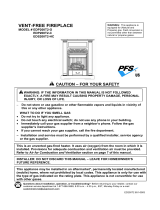 ProCom Heating EDP200T-O User manual
ProCom Heating EDP200T-O User manual
-
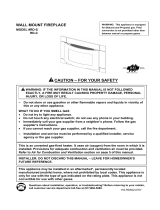 ProCom Heating RD-C User manual
ProCom Heating RD-C User manual
-
Procom PCSD25T Installation guide
-
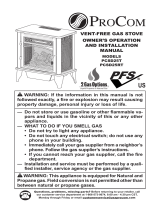 ProCom Heating PCSD25T Installation guide
ProCom Heating PCSD25T Installation guide
-
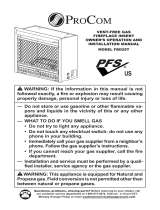 ProCom Heating FBD28T-J-AS Installation guide
ProCom Heating FBD28T-J-AS Installation guide
-
Procom PCFD32RT-M-U Operating instructions
Other documents
-
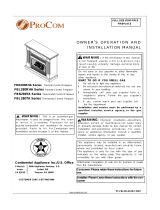 ProCom Heating FBN280RHA User manual
ProCom Heating FBN280RHA User manual
-
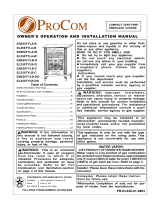 ProCom Heating EN250TYLA User manual
ProCom Heating EN250TYLA User manual
-
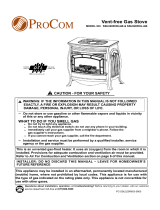 ProCom Heating SSU220RHN-GB User manual
ProCom Heating SSU220RHN-GB User manual
-
 ProCom Heating FBN400RHA User manual
ProCom Heating FBN400RHA User manual
-
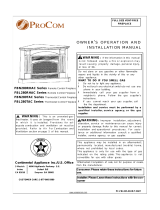 ProCom Heating FBN280RHAC User manual
ProCom Heating FBN280RHAC User manual
-
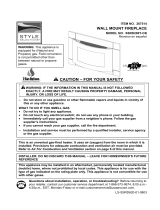 ProCom Heating SSRD200T-CB User manual
ProCom Heating SSRD200T-CB User manual
-
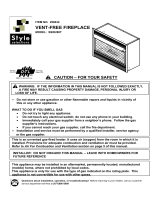 ProCom Heating SSID280T User manual
ProCom Heating SSID280T User manual
-
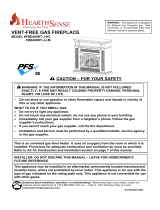 ProCom Heating FBD400RTCC User manual
ProCom Heating FBD400RTCC User manual
-
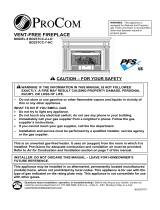 ProCom Heating BD23TCC-7-HC User manual
ProCom Heating BD23TCC-7-HC User manual
-
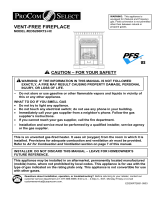 ProCom Heating EDS200RT2-HC User manual
ProCom Heating EDS200RT2-HC User manual




































